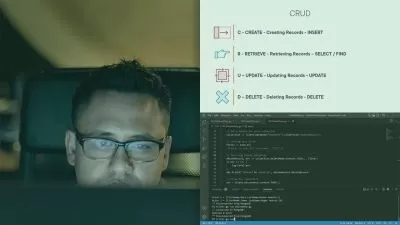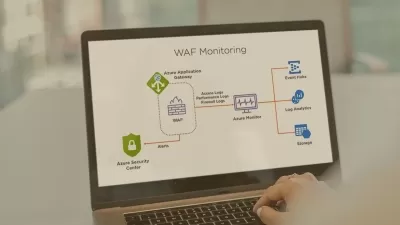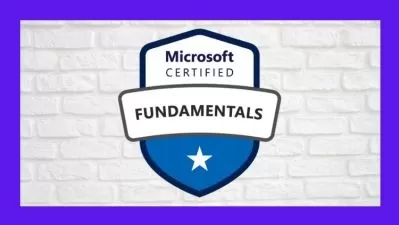Azure service bus with Go
Pritesh Mistry
31:41
Description
Azure service bus with Go for beginners
What You'll Learn?
- Understand the basics of Azure Service Bus messaging, including message queues, topics, and subscriptions.
- Learn how to create and manage Azure Service Bus instances using go and the Azure SDK.
- Develop the skills to implement common messaging patterns, such as publish-subscribe and request-response, using Azure Service Bus and go.
- Gain the ability to monitor and manage Azure Service Bus instances using go, including troubleshooting common issues and optimizing performance.
Who is this for?
More details
DescriptionAzure Service Bus is a highly scalable and reliable messaging platform that enables asynchronous communication between applications and services. With Azure Service Bus, you can decouple your applications, increase their resilience, and improve their performance. This course, "Azure Service Bus with Go," will teach you how to leverage Azure Service Bus in your Go applications.
In this course, you will start with an introduction to messaging patterns and Azure Service Bus. You will learn how to create and configure queues and topics, how to send and receive messages, and how to handle errors and exceptions. You will also explore advanced features such as sessions, dead-letter queues, and partitioned queues.
Throughout the course, you will build a sample application that demonstrates how to use Azure Service Bus in a real-world scenario. You will learn how to create a publisher and a subscriber, how to handle messages asynchronously, and how to scale your application using Azure Service Bus topics and subscriptions.
By the end of this course, you will have a solid understanding of Azure Service Bus and how to use it in your Go applications. You will be able to leverage Azure Service Bus to create highly scalable and reliable applications that can handle large volumes of data and traffic. Whether you are a developer, an architect, or an IT professional, this course will provide you with the knowledge and skills you need to be successful with Azure Service Bus and Go.
Who this course is for:
- This Udemy course on Azure Service Bus using go is for developers who are interested in learning how to use Azure Service Bus to implement messaging patterns in their applications and services. This course is ideal for: go developers who want to expand their skills to include messaging architectures and patterns using Azure Service Bus. Cloud developers who want to leverage Azure Service Bus to build scalable and reliable messaging solutions in the cloud. Software architects who are interested in designing and implementing distributed systems using messaging patterns. Application developers who want to learn how to integrate messaging capabilities into their applications using go and Azure Service Bus. Anyone who wants to learn how to use Azure Service Bus for messaging and is interested in building their skills in go programming. This course is intended for beginners to intermediate level learners who have some experience in go programming and cloud computing. However, learners with more advanced skills may also find the course valuable as it covers advanced topics such as message routing and monitoring of Azure Service Bus instances using go.
Azure Service Bus is a highly scalable and reliable messaging platform that enables asynchronous communication between applications and services. With Azure Service Bus, you can decouple your applications, increase their resilience, and improve their performance. This course, "Azure Service Bus with Go," will teach you how to leverage Azure Service Bus in your Go applications.
In this course, you will start with an introduction to messaging patterns and Azure Service Bus. You will learn how to create and configure queues and topics, how to send and receive messages, and how to handle errors and exceptions. You will also explore advanced features such as sessions, dead-letter queues, and partitioned queues.
Throughout the course, you will build a sample application that demonstrates how to use Azure Service Bus in a real-world scenario. You will learn how to create a publisher and a subscriber, how to handle messages asynchronously, and how to scale your application using Azure Service Bus topics and subscriptions.
By the end of this course, you will have a solid understanding of Azure Service Bus and how to use it in your Go applications. You will be able to leverage Azure Service Bus to create highly scalable and reliable applications that can handle large volumes of data and traffic. Whether you are a developer, an architect, or an IT professional, this course will provide you with the knowledge and skills you need to be successful with Azure Service Bus and Go.
Who this course is for:
- This Udemy course on Azure Service Bus using go is for developers who are interested in learning how to use Azure Service Bus to implement messaging patterns in their applications and services. This course is ideal for: go developers who want to expand their skills to include messaging architectures and patterns using Azure Service Bus. Cloud developers who want to leverage Azure Service Bus to build scalable and reliable messaging solutions in the cloud. Software architects who are interested in designing and implementing distributed systems using messaging patterns. Application developers who want to learn how to integrate messaging capabilities into their applications using go and Azure Service Bus. Anyone who wants to learn how to use Azure Service Bus for messaging and is interested in building their skills in go programming. This course is intended for beginners to intermediate level learners who have some experience in go programming and cloud computing. However, learners with more advanced skills may also find the course valuable as it covers advanced topics such as message routing and monitoring of Azure Service Bus instances using go.
User Reviews
Rating
Pritesh Mistry
Instructor's Courses
Udemy
View courses Udemy- language english
- Training sessions 9
- duration 31:41
- Release Date 2023/04/25

















